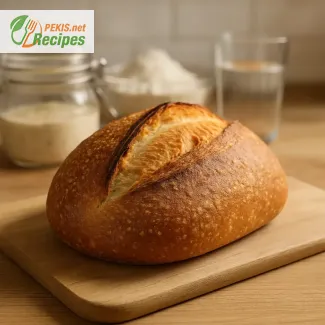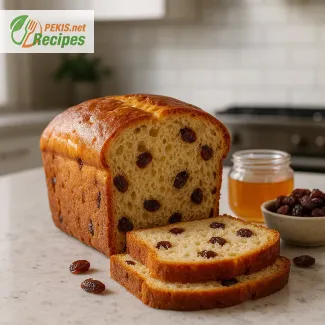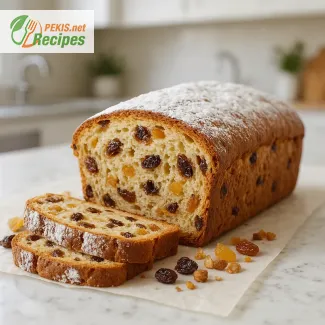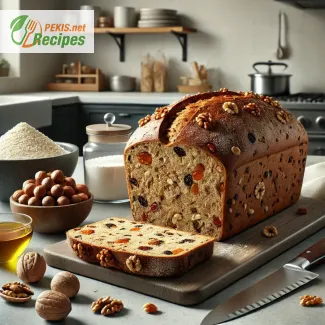
The Secret to Effortless Homemade Sourdough with Artisan Texture
Why This No-Fuss Method Is Perfect for First-Time Bakers
Crafting your own sourdough bread from scratch may seem daunting, but with the right method, ingredients, and timing, even beginners can achieve a crispy golden crust and soft, airy crumb that rivals artisan bakeries. This guide introduces a simplified technique designed specifically for home bakers who want consistent, delicious results without needing professional tools or years of experience.
Unlike yeasted breads that rely on commercial yeast, sourdough bread is leavened naturally through a live culture called a sourdough starter. This fermented mixture of flour and water contains wild yeasts and beneficial bacteria that not only provide rise, but also impart depth of flavor, superior texture, and longer shelf life. The result is bread that is crusty on the outside, pillowy inside, and naturally complex in flavor — all without additives.
Understanding the Essentials of Beginner Sourdough Baking
Sourdough starter – the living heart of every loaf
To make great sourdough, your starter must be active and bubbly. It typically takes 5–7 days to cultivate a healthy starter from scratch. Once established, this culture replaces the need for packaged yeast entirely. When ready for baking, your starter should double in size within 4–6 hours of feeding, have a slightly tangy aroma, and pass the “float test.”
The beauty of sourdough lies in its natural fermentation, which brings not only flavor but also digestibility. A robust starter ensures proper rise and structure without chemicals, making the bread feel light, yet satisfying.
Flour selection – striking the perfect balance
A combination of bread flour for structure and whole wheat flour for flavor and fermentation activity yields ideal results. Bread flour’s high protein content helps form a strong gluten network, while a portion of whole wheat adds nutty depth and supports microbial growth. For beginners, a ratio of 90% bread flour to 10% whole wheat offers both reliability and taste.
Using unbleached and organic flours improves both flavor and microbial diversity in your dough. Avoid over-milled or treated flours, which can inhibit the starter’s activity and weaken gluten development.
Water quality and dough hydration
Filtered water is best for sourdough, as chlorine in tap water can harm your starter. Temperature matters too—lukewarm water helps activate fermentation. For beginners, starting with a 65–70% hydration dough (meaning 65–70 g water per 100 g flour) offers easier handling and predictable shaping while still producing an open crumb.
Higher hydration doughs yield larger air pockets, but require more advanced folding and shaping techniques. A slightly lower hydration makes learning the sourdough process smoother without compromising flavor.
The Sourdough Timeline – A Slow Fermentation Journey
Autolyse, bulk fermentation, and stretch & folds
The autolyse phase begins by mixing flour and water and letting it rest. This hydrates the flour and begins gluten development naturally. Once the starter and salt are added, the dough enters the bulk fermentation stage — where the real transformation occurs.
During bulk fermentation, periodic stretch and folds strengthen the gluten network, build structure, and encourage even gas distribution. For beginners, 3–4 gentle folds spaced 30 minutes apart is ideal. This step takes place over several hours at room temperature, typically around 22–24°C (72–75°F).
The result is a dough that becomes more elastic, puffy, and smooth, a clear sign that fermentation is progressing well.
Cold proofing for flavor and structure
After shaping, the dough undergoes a cold proof in the refrigerator overnight, usually 12–18 hours. This slow, cold fermentation further develops flavor and helps maintain the dough’s shape for baking. A banneton basket or even a bowl lined with a floured towel can be used for this step.
Cold-proofed sourdough scores beautifully, holds its shape in the oven, and develops deep flavor complexity. For the home baker, this step also adds flexibility—bake when ready the next day.
Scoring, Baking & Steam: Key to the Perfect Crust
Scoring isn’t just decorative—it guides how the bread expands in the oven. A sharp blade or lame is used to make deliberate cuts that control oven spring. Classic sourdough slashes are simple but purposeful.
The oven must be very hot, typically preheated to 230–250°C (450–480°F). Steam is critical during the first part of the bake—it allows the crust to expand before setting and gives it a shiny, blistered finish.
For beginners, using a Dutch oven simulates a steam oven by trapping moisture released from the dough. This method consistently yields a crusty sourdough with caramelized color and excellent oven spring.
Common Sourdough Mistakes Beginners Should Avoid
Underdeveloped gluten
Skipping stretch and folds or autolyse leads to a slack dough that won’t hold shape or rise well. Make sure to allow time for development and structure.
Overproofing
If left too long, sourdough can collapse from over-fermentation. Signs include a very loose dough that sticks and flattens when shaped. Use the poke test: if the dough springs back slowly but leaves an indentation, it’s ready.
Weak starter
An immature or unfed starter lacks leavening power. Always feed the starter several hours before baking and ensure it’s active, buoyant, and aromatic.
Improper shaping
Rough handling during shaping can deflate the dough. Handle gently and use surface tension to build strength without squeezing out gas.
Why Sourdough Is the Ultimate Bread for Home Bakers
Sourdough is more than just a trend — it’s a craft that blends patience, science, and intuition. Unlike quick breads, sourdough evolves over time, connecting the baker to a tradition of natural fermentation. The reward is bread that tastes better, lasts longer, and showcases the beauty of minimal ingredients transformed by time.
This beginner-friendly approach is designed to demystify sourdough baking and help anyone bake a loaf with a crackling crust and soft, open crumb — even on the very first try. With a few ingredients, basic tools, and a little care, sourdough can become a staple in any home kitchen.
1. Autolyse (first rest):
In a large mixing bowl, combine bread flour, whole wheat flour, and lukewarm water. Stir until no dry flour remains. Cover with a clean towel or lid and let rest for 1 hour at room temperature. This resting phase helps hydrate the flour and begin natural gluten development.
2. Mixing and adding starter:
After the autolyse, add the sourdough starter to the dough. Using wet hands, pinch and fold the dough to incorporate the starter thoroughly. Cover again and let rest for 30 minutes.
3. Adding salt:
Sprinkle fine sea salt over the dough. Gently fold and knead the dough in the bowl for a few minutes until the salt is fully integrated. Let the dough rest, covered.
4. Bulk fermentation with stretch & folds:
Over the next 4 hours, perform 3 to 4 sets of stretch and folds, spaced 30 minutes apart. To stretch and fold, grab one side of the dough, stretch it upwards, and fold it over. Rotate the bowl and repeat on all sides. After the final fold, allow the dough to ferment at room temperature until it becomes puffy and elastic (total fermentation time approx. 5–6 hours depending on room temperature).
5. Preshape and rest:
Lightly flour your work surface. Turn out the dough and gently shape it into a round. Let it rest, uncovered, for 20–30 minutes to relax the gluten.
6. Final shaping:
Shape the dough into a tight round boule by folding the edges toward the center and turning it seam-side down. Place the dough in a floured proofing basket or bowl lined with a clean towel. Cover and refrigerate overnight (12–18 hours) for cold proofing.
7. Scoring and baking:
Preheat your oven to 250°C (480°F) with a Dutch oven inside for at least 30 minutes. Remove the dough from the fridge. Gently turn it out onto parchment paper. Score the top with a sharp blade or lame.
8. Bake:
Carefully place the dough into the hot Dutch oven. Cover with the lid and bake for 20 minutes. Remove the lid and reduce heat to 230°C (450°F). Continue baking for another 25 minutes until the crust is deeply golden brown.
9. Cool completely:
Let the bread cool on a wire rack for at least 1 hour before slicing to allow the crumb to set properly.
Mastering Sourdough: Small Changes That Make a Big Difference
Simple Enhancements for a Flawless Homemade Loaf
The beauty of sourdough bread lies in its simplicity—just flour, water, salt, and a living starter. But within these basic ingredients is a world of nuance that offers countless opportunities to refine and elevate the final loaf. Whether you're seeking a deeper flavor, more open crumb, or healthier variation, understanding how each element behaves gives you the power to make your sourdough better with every bake.
Flour blends that build complexity
One of the easiest ways to improve your sourdough is by adjusting the flour composition. While the base recipe uses a combination of bread flour and whole wheat flour, experimenting with small additions of other flours can create notable flavor and texture shifts.
Adding 10–15% rye flour brings a slightly earthy tang and promotes a livelier fermentation. Rye flour is rich in enzymes, helping the dough become more active. Similarly, spelt flour can give the crumb a slightly nutty and sweet undertone while making the crust thinner and more delicate.
For those who want more character, try a blend like 70% bread flour, 20% whole wheat, and 10% rye. This mix enhances aroma, fermentation speed, and crust color while preserving a strong gluten structure.
Adjusting hydration for crumb variation
The hydration level—ratio of water to flour—has a major impact on your sourdough's texture. Beginners often start with 65–70% hydration, which is manageable and reliable. But increasing hydration to 75–80% can lead to a more open crumb and moister interior. The result is a rustic, artisan-style bread with large air pockets and a custardy chew.
However, higher hydration doughs require improved handling skills. They’re stickier, need more folds, and benefit from longer rest times. Once you’re comfortable with the basics, gradually increasing hydration opens a new level of crumb texture and softness.
Boosting flavor with long fermentations
If your sourdough tastes bland, time is your best ally. Allowing a longer cold fermentation in the fridge—up to 48 hours—can enhance the bread’s tanginess and aromatic depth. A slow rise also improves digestibility by breaking down gluten and phytic acid.
To extend proofing without overfermenting, slightly reduce the amount of starter or keep the dough colder (around 4°C / 39°F). This lets flavor compounds develop without over-acidifying the dough.
Adding a small amount of diastatic malt powder (around 0.5% of flour weight) can improve crust browning and enhance natural sweetness. Just a touch can make your crust richer in color and add complexity to the final aroma.
Common beginner mistakes and how to fix them
One of the most common issues in sourdough baking is underproofing—when the dough hasn’t fermented long enough. The result is a dense, tight crumb and poor oven spring. To avoid this, pay attention to visual and tactile cues: the dough should feel airy, jiggly, and slightly domed after proofing.
Conversely, overproofing creates a flat loaf with poor structure. The dough may spread instead of rising, and the crumb becomes gummy. The “poke test” is a reliable indicator—press your finger into the dough; it should spring back slowly and leave a slight indentation.
Another frequent error is poor scoring technique. A dull blade or incorrect angle can prevent proper expansion in the oven. Use a razor-sharp lame and hold it at a shallow angle (about 30 degrees) for optimal oven spring and decorative slashes.
Health-forward alternatives for dietary needs
If you're aiming for a more nutrient-dense loaf, consider incorporating ancient grains such as kamut, emmer, or einkorn. These grains offer more minerals and a richer taste profile. Replace up to 20% of the total flour with these flours and monitor hydration carefully, as they absorb water differently.
For added fiber, include 5–10% oat flour or ground flaxseed. These ingredients not only boost nutritional value but also soften the crumb and enhance moisture retention.
To reduce sodium, you can cut the salt to 7 g per loaf (instead of 10 g) without sacrificing too much flavor. However, salt also plays a role in gluten strength and fermentation control, so don’t omit it entirely.
Why homemade sourdough outshines store-bought
When you bake sourdough at home, you're in control of every step: the ingredients, the timeline, and the quality. Store-bought versions may contain additives, commercial yeasts, or preservatives that shortcut the fermentation process, resulting in a flatter flavor and shorter shelf life.
Homemade sourdough undergoes a true natural fermentation that enhances digestibility, supports gut health, and creates a more satisfying mouthfeel. The crust tends to be more aromatic and crunchy, while the crumb retains more flavor and freshness for days.
You can also adjust every batch to suit your preferences—sourness, crust thickness, crumb density—making each loaf a reflection of your craft.
Creating your signature loaf
Once you've mastered the basics, developing a signature sourdough becomes part of the joy. You might infuse your dough with roasted garlic, caramelized onions, or sun-dried tomatoes for a savory variation. Sweet additions like cranberries and walnuts or figs and hazelnuts add contrast and make for exceptional table bread.
Experimenting with seeds like sesame, flax, or poppy—either in the dough or as a crust coating—adds crunch, aroma, and nutritional value. Toasted seeds especially bring out nutty tones that complement sourdough’s natural acidity.
For an eye-catching touch, dust your shaped dough with rice flour before scoring. It creates a striking contrast after baking and prevents sticking.
Elevating your sourdough
Sourdough isn't just a recipe—it’s a rhythm, a relationship with time and fermentation. Improving it doesn’t require dramatic changes. Small adjustments—from hydration tweaks to longer cold proofs—can significantly impact the flavor, texture, and beauty of your bread. With a thoughtful approach and some experimentation, your next loaf will not only be better—it will be unforgettable.
Allergens present in the recipe:
- Gluten: Present in bread flour and whole wheat flour.
- Wheat: Present.
Tips for allergen substitution:
- For gluten intolerance: Replace bread flour and whole wheat flour with a certified gluten-free sourdough flour blend that includes xanthan gum for structure. Note: fermentation might vary and require a different hydration ratio.
- For wheat allergy: Use gluten-free oat flour or a sorghum/buckwheat blend specifically designed for sourdough baking.
Vitamins and minerals per slice (approximate):
- Vitamin B1 (Thiamine): 0.15 mg – supports energy metabolism and nerve function
- Vitamin B3 (Niacin): 2 mg – aids in digestive health and skin regeneration
- Iron: 1.2 mg – essential for red blood cell production
- Magnesium: 20 mg – contributes to muscle and nerve function
- Zinc: 0.6 mg – strengthens immune response
- Phosphorus: 60 mg – supports bone health and cell repair
- Manganese: 0.4 mg – crucial for metabolism and antioxidant function
Antioxidants per slice (approximate):
- Ferulic acid: 5–8 mg – found in whole wheat, helps neutralize free radicals
- Lutein: 0.2 mg – contributes to eye health and protects cells from oxidative stress
- Beta-glucans: Trace amounts – supports immune modulation and gut health
- Phenolic compounds: Small amounts – provide anti-inflammatory properties and cellular protection





